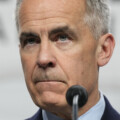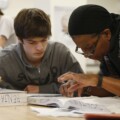Independent school enrolments are on the rise in Canada. And Ontario, with a dramatic enrolment increase over recent years, is certainly no exception.
Elementary and secondary independent school enrolments in Canada increased by more than 21 percent from 2006-07 to 2019-20 (rising from 351,408 to 425,679 students), according to the most complete comparable data from Statistics Canada.Number of students in elementary and secondary schools, by school type and program type At the same time, enrolments in public elementary and secondary schools in the country rose by less than 2 percent (from 4,882,290 to 4,975,797 students).
Consider Ontario, the province educating more students than any other and a leading province for independent school enrolment increases. Over the 14-year period ending in 2019-20 StatCan data show a 34 percent increase in students attending independent schools, climbing to more than 153,291 students.Number of students in elementary and secondary schools, by school type and program type
As is the case with the national picture, this provincial growth is dramatic, perhaps even more so when one considers that over the same period, public school enrolments in Ontario declined by more than 2 percent (from 2,103,465 to 2,056,059 students).
Worth further investigation as well is the extraordinary growth over the same 14 years in Saskatchewan (where independent school enrolments almost tripled), Prince Edward Island (nearly doubled), and New Brunswick (more than 50 percent growth).
The growth trend pre-Covid is remarkable.
But how have enrolments changed during the pandemic?
Since the StatCan data do not yet include the most recent years, available data for a subset of Ontario schools can be used.
Enrolment data for the 84 schools affiliated with an association of independent schools, Edvance, show that from one pandemic year to the next, that is from 2020-21 to 2021-22, enrolments increased from 15,130 to 16,435 students—an 8.6 percent increase in enrolment over a single year, from the last school year to this current one.
Most, but not every school affiliated with the association experienced growth. Further analysis showed that 81 percent of affiliate schools grew and fully 30 percent of the 84-school subset saw over 15 percent growth in enrolments. Of the five schools that showed a decline of more than 15 percent in enrolments, it was observed that almost all of them were small elementary schools located in small centres where populations number less than 30,000 and attrition could most likely be explained by the choice to home educate.
Another indicator of growth in the independent school sector is growth in the number of schools. Again, take Ontario as an example. From one pandemic school year to the next, 2020-21 to 2021-22 (using ministry data from June 2021 and from April 2022), the number of independent schools grew from 1,506 to a record-breaker of 1,576, a 4.6 percent increase. This is on top of 7.3 percent growth the previous year, the first year of the pandemic.
Indeed, growth in the number of independent schools in recent years is staggering.
Ten years ago there were 954 independent schools in Ontario.A Diverse Landscape: Independent Schools in Canada With the Ministry of Education list from April 2022 showing 1,576 independent schools, this is an astonishing 65 percent growth in the number of independent schools in a single decade.
One in four schools in Ontario (24.9 percent) is now an independent school (about 4,833 of the province’s 6,409 schools are public schools).Education Facts, 2020-2021
Recall that an independent school operates within government regulatory parameters and typically receives government funding. The distinction from a so-called public school is that it is not operated by the government but rather by an independent non-profit board or operator.
This is educational pluralism. And it is on the rise in Canada.
Ontario is a shocking example in that it (and the Atlantic provinces) is unique among most of the world as the independent school sector operates without any provincial government education funding.
Yet more independent schools are opening. More families are choosing them.
What might this mean for a provincial government interested in innovation and entrepreneurship, in education reform?
With educational pluralism the global trend, and Canadian provinces now clear exemplars of that trend, it is time to take a closer look at the types of schools being opened. It is time to start asking—with a lot of curiosity—what is on offer there that has the attention of growing numbers of innovators, entrepreneurs, communities, educators, and families.
If we are to reform education in our provinces so that all students can flourish and contribute, the first stop for sincere inquiry into education innovation should be the independent school sector.
Recommended for You

The Notebook by Theo Argitis: Mark Carney’s first major tests

‘Those deficits are almost surely going to rise’: Trevor Tombe on the fiscal challenges facing the Carney government

DeepDive: Canada’s universities are failing to provide proper civic education. Here’s how Alberta can correct course

Paul W. Bennett: With AI taking over classrooms, it’s time to go old school again




